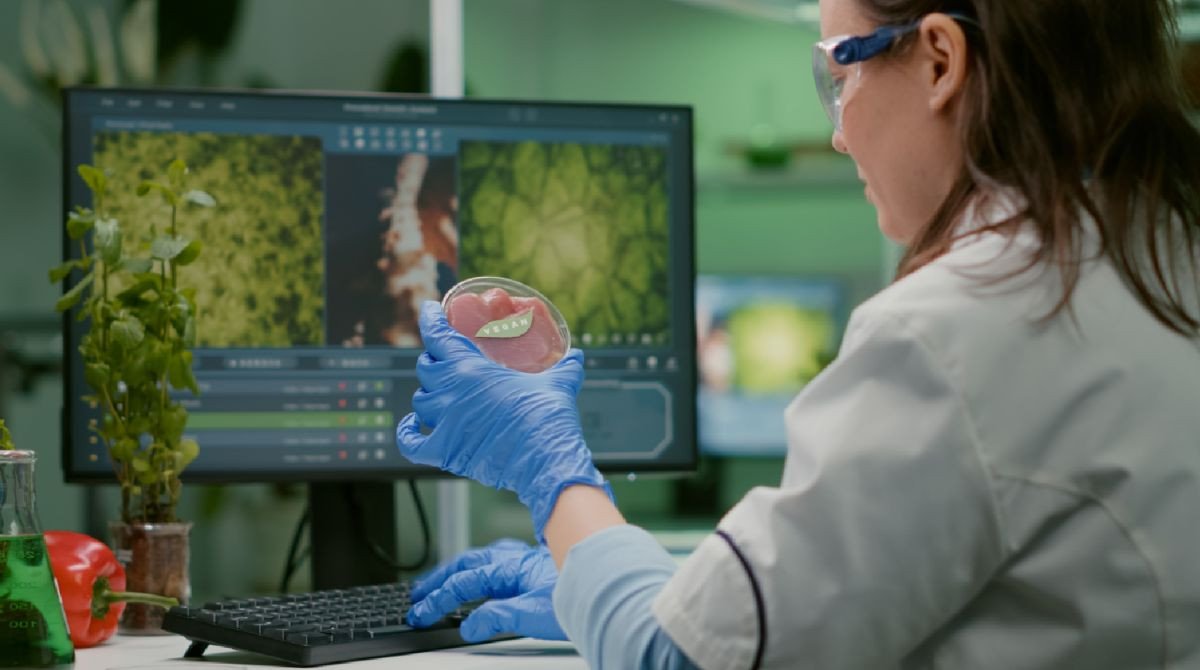- December 18, 2025

Imagine a vast library, not filled with books, but with strings of data, each representing the fundamental building blocks of life itself. This is the domain of bioinformatics, a field that delves into the intricate world of biological information, using computational tools to decipher its secrets and unlock its immense potential.
From Genes to Genomes: A Data Revolution
Biology has long been a data-driven science, meticulously collecting and analyzing observations about living organisms. However, the 21st century has witnessed an explosion of biological data, fueled by advancements in DNA sequencing and high-throughput technologies. The human genome, once a monumental feat, can now be sequenced in a matter of days, generating gigabytes of data that hold the blueprint of our existence.
This data deluge presents both a challenge and an opportunity. Bioinformatics bridges the gap between raw data and meaningful insights, employing sophisticated algorithms and statistical methods to analyze, interpret, and integrate vast datasets. This allows researchers to:
Map genes and their functions: By analyzing DNA sequences, bioinformaticians can identify genes, predict their protein products, and understand their roles in various biological processes. This knowledge is crucial for understanding health and disease, paving the way for personalized medicine.
Unravel complex biological systems: Biological systems are intricate networks of interacting molecules and pathways. Bioinformatics tools can analyze these interactions, revealing hidden patterns and relationships that would be impossible to discern through traditional experimentation alone. This opens doors for targeted drug discovery and the development of novel therapeutic strategies.
Compare and contrast species: By comparing the genomes of different organisms, bioinformaticians can identify conserved regions that point to essential biological functions. This comparative approach allows us to understand the evolution of life and sheds light on the basis of human health and disease.
Predict and prevent diseases: Bioinformatics plays a vital role in analyzing genetic variations associated with diseases. This information can be used to develop diagnostic tests, predict disease susceptibility, and even tailor preventive measures for individuals at risk.
Beyond the Genome: A Broader Scope
While genomics is a central focus, bioinformatics extends far beyond DNA sequencing. It encompasses a wide range of data types, including:
Protein structures: Understanding the intricate folds of proteins is crucial for elucidating their functions and designing drugs that target them. Bioinformatics tools can predict and analyze protein structures, providing valuable insights into their roles in health and disease.
Gene expression: Analyzing how genes are turned on and off in different cells and tissues provides a deeper understanding of cellular processes and disease development. Bioinformatics tools can analyze gene expression data, revealing patterns and relationships that guide further research.
Microbiome data: The trillions of microbes that live in our bodies play a crucial role in health and disease. Bioinformatics is essential for analyzing microbiome data, identifying key bacterial players, and understanding their interactions with the human host.
The Impact of Bioinformatics: From Bench to Bedside
The impact of bioinformatics extends far beyond academic research. It is transforming various aspects of healthcare and medicine:
Personalized medicine: By analyzing individual genetic variations, bioinformatics can help tailor treatment plans to each patient's unique needs, improving treatment efficacy and reducing side effects.
Drug discovery and development: Bioinformatics tools can be used to identify potential drug targets, design new drugs, and predict their effectiveness, accelerating the drug development process.
Diagnostics and prognostics: Bioinformatics-based tests can diagnose diseases earlier and more accurately, allowing for timely intervention and improved patient outcomes.
Public health surveillance: By analyzing large datasets of genetic and epidemiological data, bioinformaticians can track the spread of infectious diseases and develop effective prevention strategies.
The Future of Bioinformatics: A World of Possibilities
Bioinformatics is a rapidly evolving field, constantly pushing the boundaries of what's possible. As technology advances and data volumes continue to grow, we can expect even more transformative applications in the future, such as:
Gene editing and synthetic biology: With a deeper understanding of genomes, we may be able to edit genes to correct genetic diseases or engineer organisms with desirable traits.
Artificial intelligence in biology: AI algorithms can analyze massive amounts of data to identify patterns and make predictions, leading to breakthroughs in areas like drug discovery and personalized medicine.
Brain-computer interfaces: By analyzing brain activity data, bioinformaticians may one day be able to develop interfaces that allow us to control computers or even prosthetics with our thoughts.
Conclusion: Decoding the Code of Life
Bioinformatics is more than just a set of tools; it is a new lens through which we can view and understand the world of biology. By decoding life's data, we are unlocking the secrets of health and disease, paving the way for a healthier and more sustainable future. As we continue to explore the